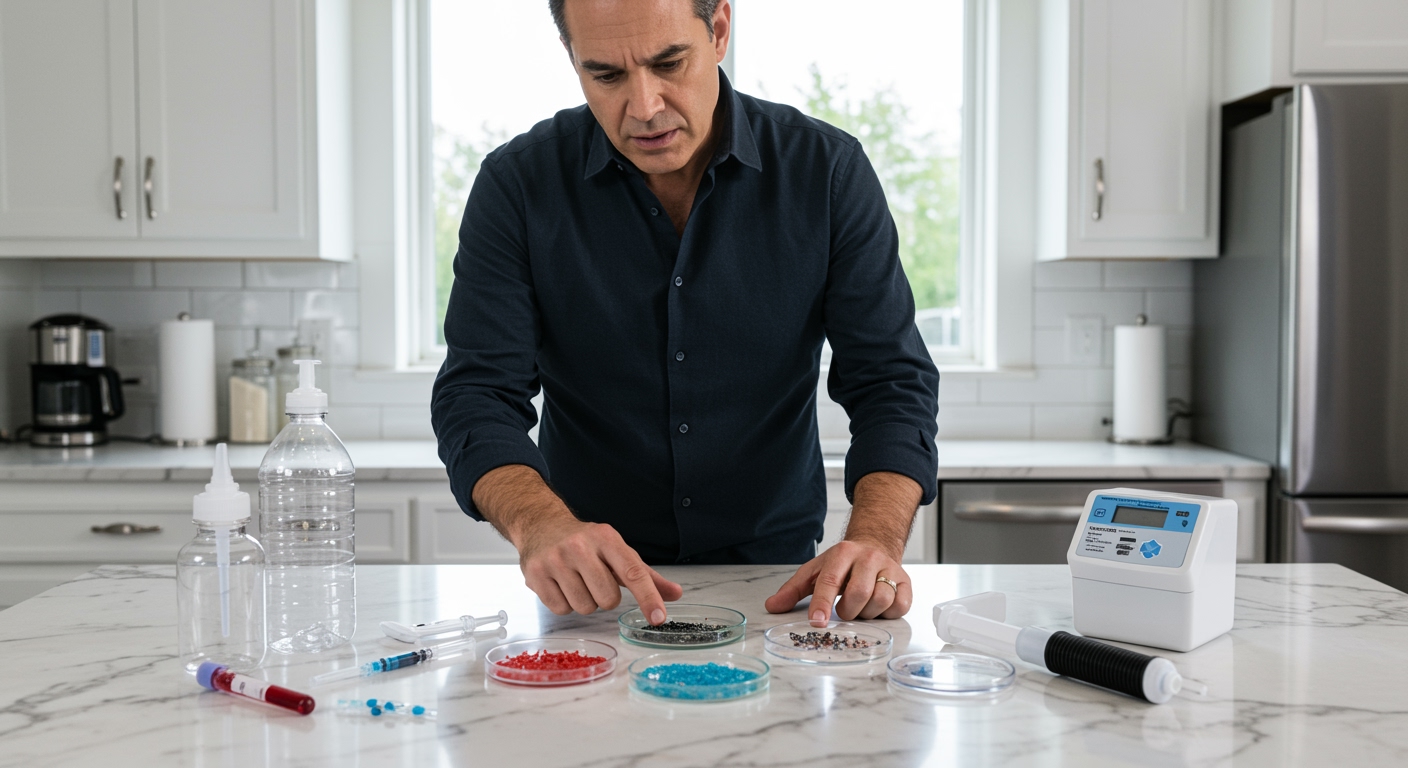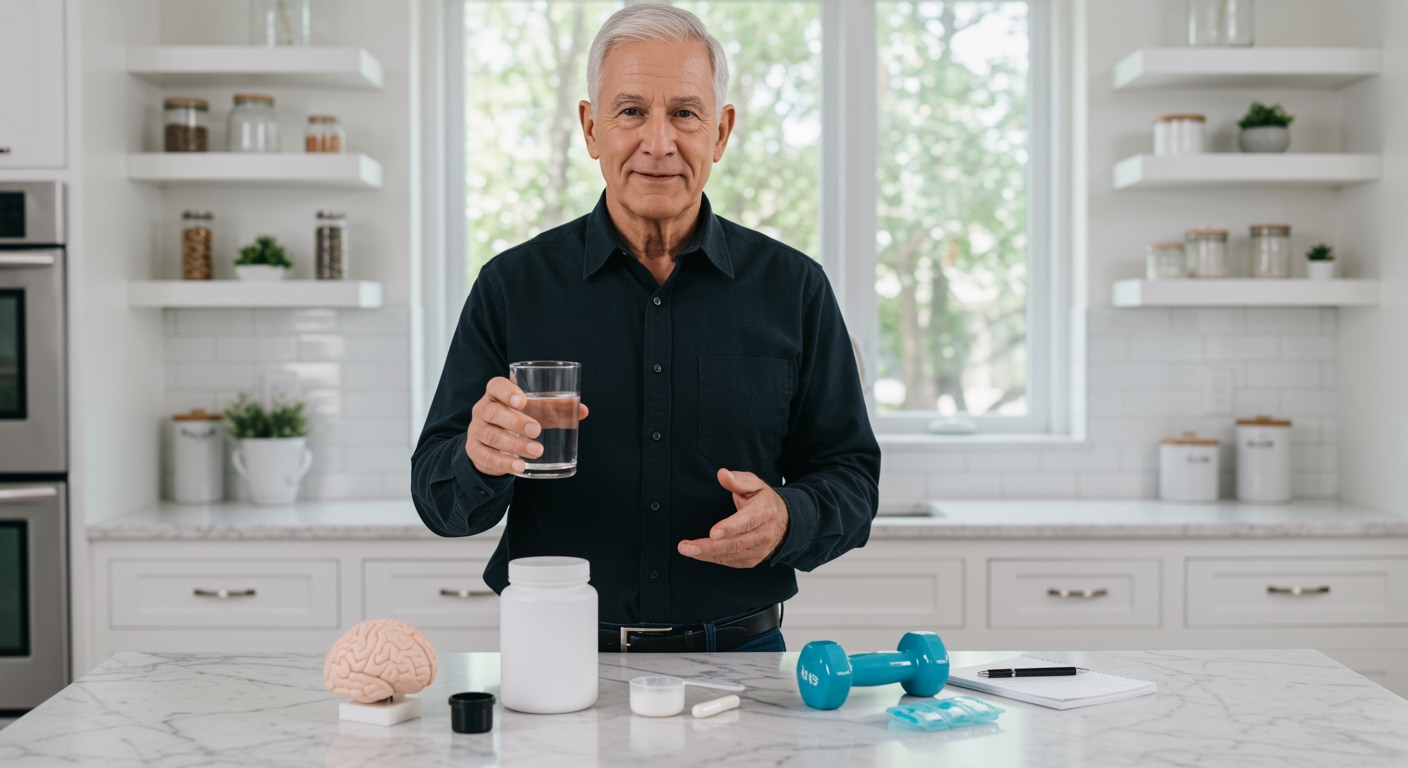✪ Key Highlight: Orlando Bloom’s £10,000 blood cleaning treatment lacks scientific evidence for removing microplastics from human blood.
Introduction
Orlando Bloom recently sparked controversy when he shared photos of himself undergoing an expensive blood cleaning treatment.
The actor claimed this apheresis procedure could remove up to 99 percent of microplastics from his blood, but medical experts quickly challenged these bold claims.
Hi, I’m Abdur, your nutrition coach and today I’m going to analyze Orlando Bloom’s controversial blood cleaning treatment and what science really says about removing microplastics from our bodies.
What Is This Blood Cleaning Treatment?
Bloom underwent a medical procedure called apheresis, which is typically reserved for treating serious health conditions.
This process involves drawing blood from the body, separating it into different components, filtering it, and then returning it to the bloodstream.
Medical professionals normally use apheresis to treat autoimmune diseases or remove dangerously high levels of certain blood cells or proteins.
The clinic claimed their version could eliminate up to 99 percent of microplastics from blood, a statement that immediately raised red flags among scientists.
Experts pointed out that no published scientific evidence supports the claim that apheresis can remove microplastics from human blood.
The treatment reportedly cost around £10,000, making it an expensive gamble on unproven technology.
✪ Fact: Apheresis was originally developed to treat life-threatening blood disorders, not to remove environmental toxins.
How Do Microplastics Enter Our Bodies?
Microplastics have become an unavoidable part of our daily environment through multiple exposure pathways.
These tiny plastic particles first appeared in marine life like fish and shellfish, and by 2017, scientists estimated people could ingest up to 11,000 plastic particles yearly just from eating seafood.
However, food is not the only source of microplastic contamination in our bodies.
These particles are now found in our air, drinking water, soil, and even inside human tissues throughout the body.
A recent study published in Environment International found microplastics in the blood of 90 percent of healthy volunteers.
The research identified 24 different types of plastic polymers, with concentrations ranging from 1.84 to 4.65 micrograms per milliliter of blood.
The most common types were polyethylene, ethylene propylene diene, and ethylene-vinyl acetate, mostly appearing as small, white or clear plastic fragments.
✪ Pro Tip: Microplastics enter through breathing, eating, and drinking, making complete avoidance nearly impossible in modern life.
What Health Risks Do Microplastics Pose?
The presence of microplastics in human blood raises serious concerns about potential health consequences.
Research suggests these particles can cause inflammation of blood vessels, increase the risk of blood clots, and accumulate in vital organs.
Dick Vethaak, professor emeritus of ecotoxicology at Vrije Universiteit Amsterdam, led a 2022 study showing microplastics are more harmful when inhaled than eaten.
He explained that these tiny particles can enter the bloodstream and travel throughout the body, potentially causing harm in ways scientists are only beginning to understand.
A study published in Science Advances in January 2025 found that microplastics in the bloodstream can lead to blood vessel blockages.
The research also suggested these particles may contribute to neurological problems and cardiovascular disease.
Additionally, the study found plastic additives like phthalates, which are known hormone disruptors that can interfere with normal bodily functions.
✪ Note: Phthalates are chemical additives that make plastics flexible but can disrupt hormone production in humans.
Why Do Experts Reject These Blood Cleaning Claims?
Medical experts have expressed strong skepticism about the effectiveness of blood cleaning treatments for microplastic removal.
Edzard Ernst, a professor of complementary medicine, stated he is not aware of reliable evidence demonstrating that the procedure has any of the declared effects on human health.
Experts studying dialysis, a proven treatment that filters waste from blood in kidney failure patients, noted important limitations.
While dialysis can remove certain substances, there is no proof it can filter out microplastics from human blood.
They also pointed out a concerning irony: the filtration systems used in these treatments are themselves made of plastic.
This means the treatment could potentially introduce new plastic contaminants while claiming to remove existing ones.
Even if the treatment worked temporarily, microplastics would quickly return with the next meal or breath of air, making any benefits extremely short-lived.
✪ Fact: The plastic components in filtration systems could introduce more microplastics than they remove.
What Should We Do Instead?
Scientists emphasize that the best strategy focuses on reducing exposure to microplastics rather than expensive removal treatments.
This approach involves supporting efforts to reduce plastic pollution, improving regulations, and finding alternatives to plastic in everyday products.
Experts argue that real solutions require rigorous science and a shift away from our reliance on plastic, not quick fixes without solid evidence.
The story of microplastics in human blood is still unfolding, with researchers calling for more investigation into health effects and protection methods.
While the dangers are not yet fully understood, the presence of microplastics in blood is now a proven fact.
The potential for harm is real enough to warrant concern and action, but that action should be based on prevention rather than unproven cures.
✪ Pro Tip: Focus on reducing plastic use in daily life rather than seeking expensive treatments without scientific backing.
The Bottom Line
Orlando Bloom’s high-profile blood cleaning treatment highlights our collective anxiety about microplastic contamination but offers no scientifically proven solution.
Prevention through reduced plastic exposure remains our best defense until science develops evidence-based removal methods.
I would love to hear your thoughts on this controversial treatment and whether you think celebrities should promote unproven medical procedures – please share your questions or opinions in the comment section below.
References
At NutritionCrown, we use quality and credible sources to ensure our content is accurate and trustworthy. Below are the sources referenced in creating this article:
- LADbible: Orlando Bloom Microplastics Blood Treatment Reaction
- PubMed: Microplastics in Human Blood Study
- Science Alert: Celebrity Blood Cleaning Procedure Controversy
- Science Advances: Microplastics Health Effects Research
- PubMed: Microplastics Detection in Human Blood





